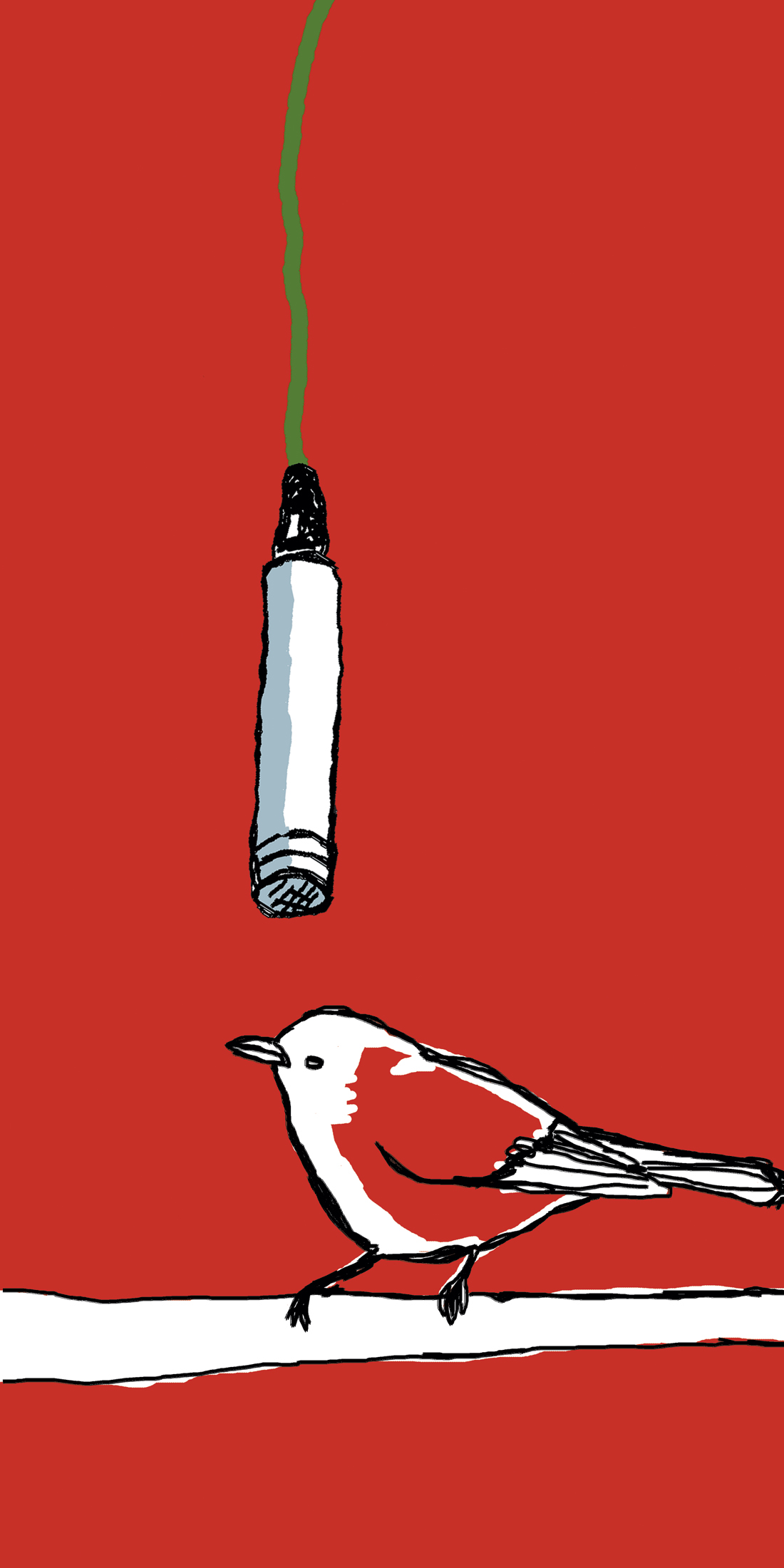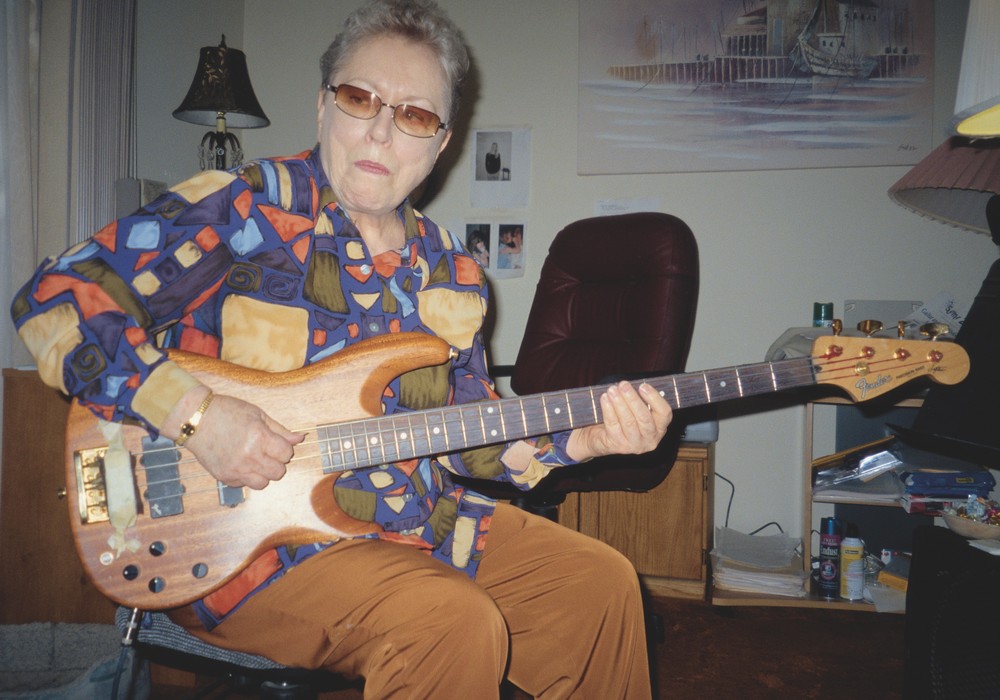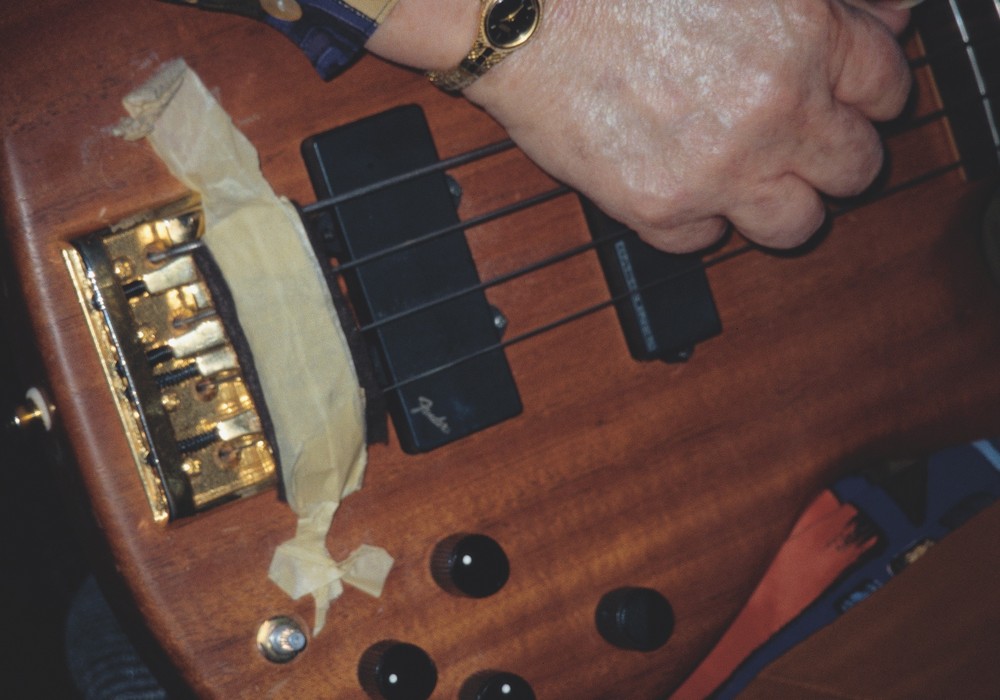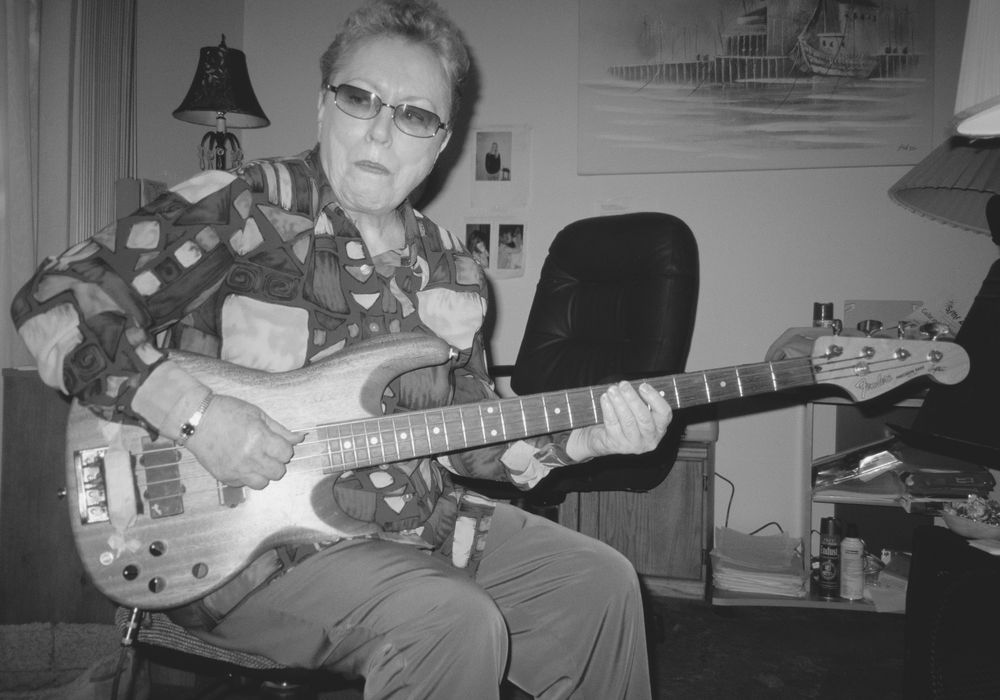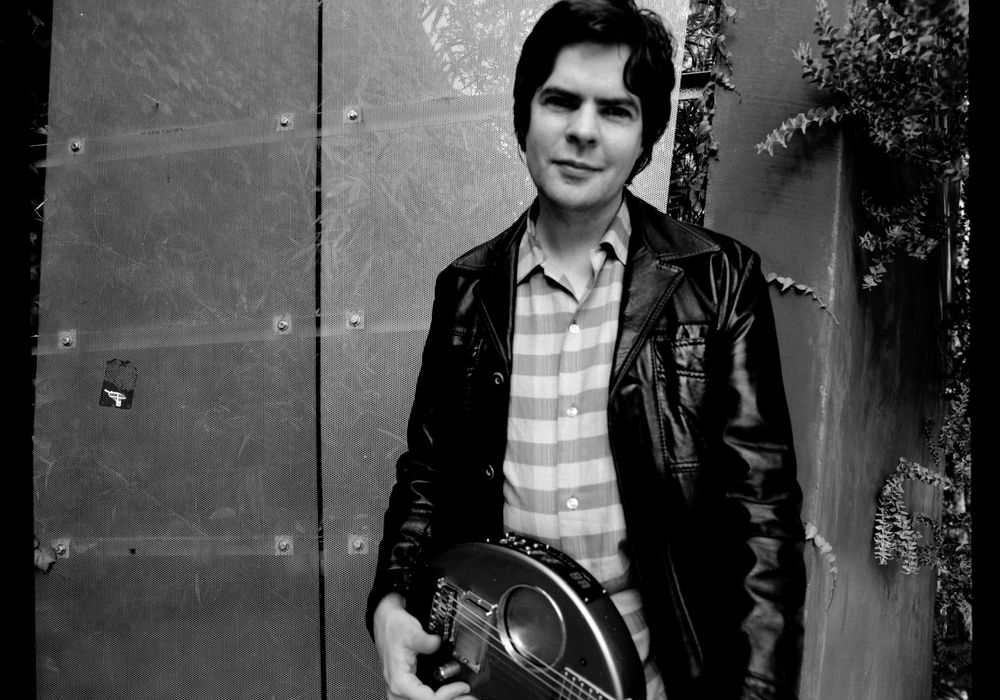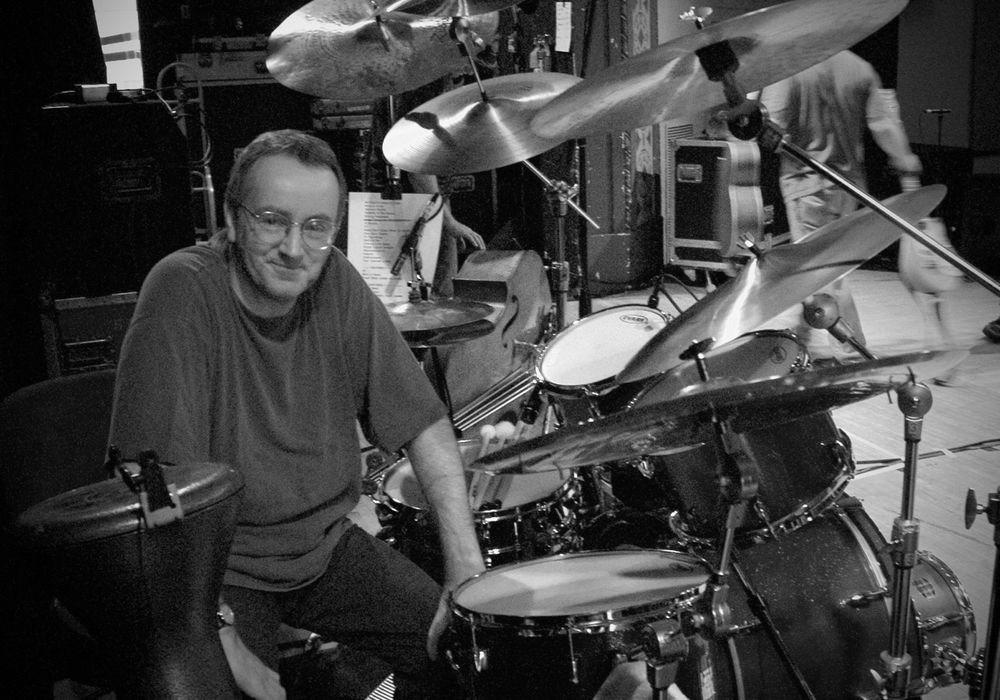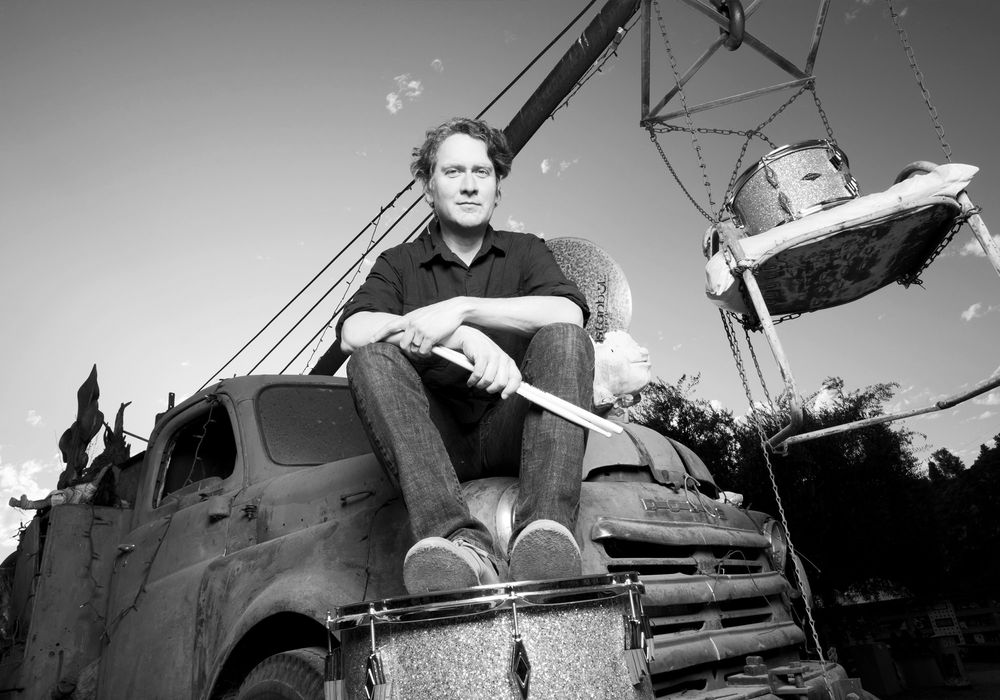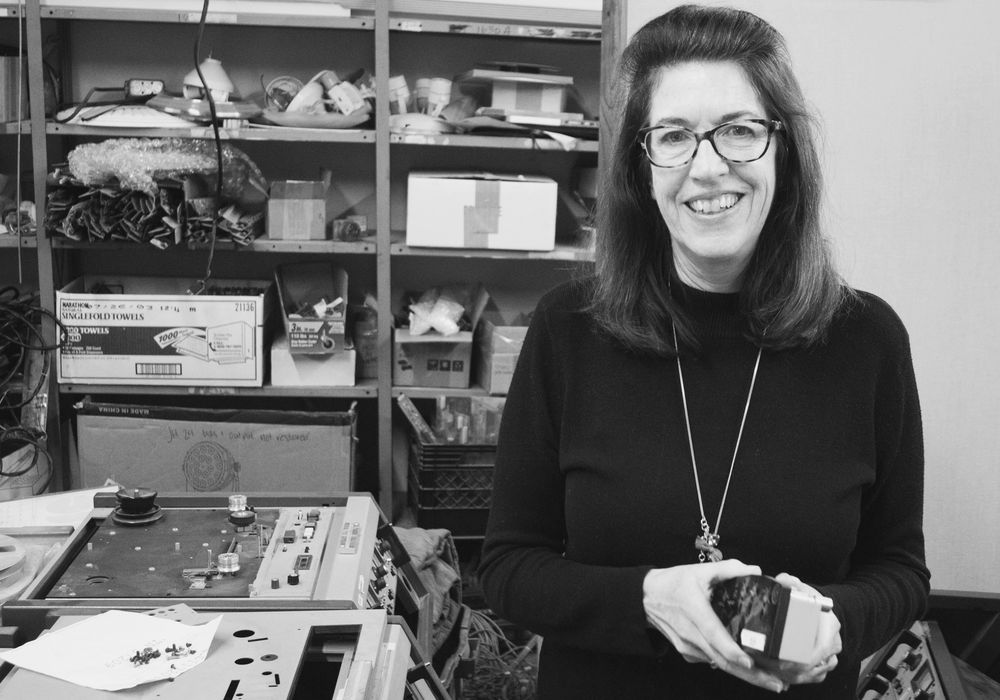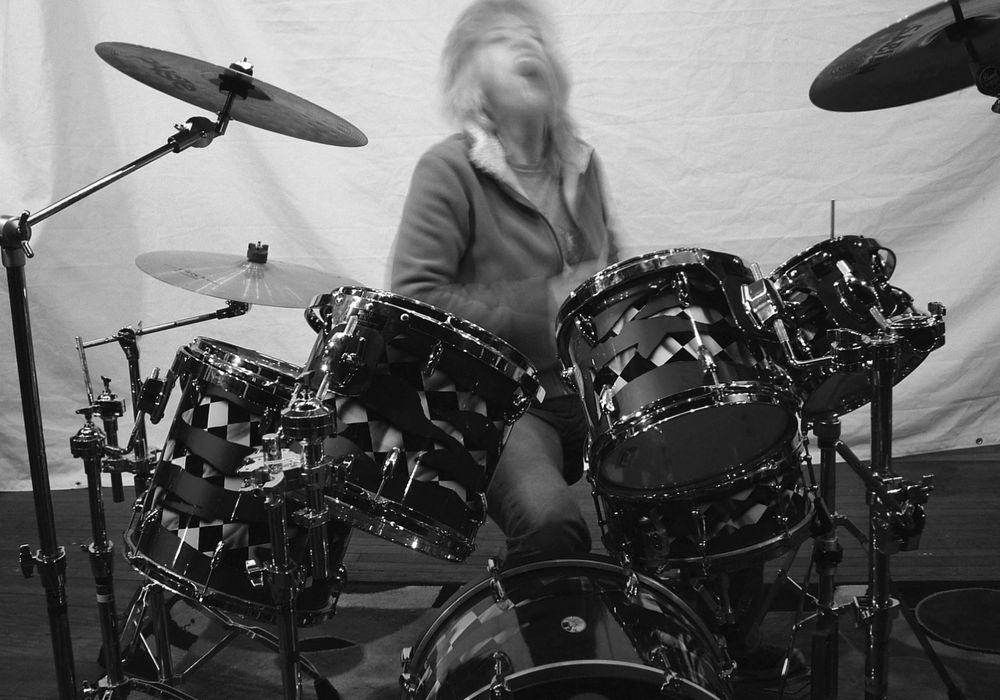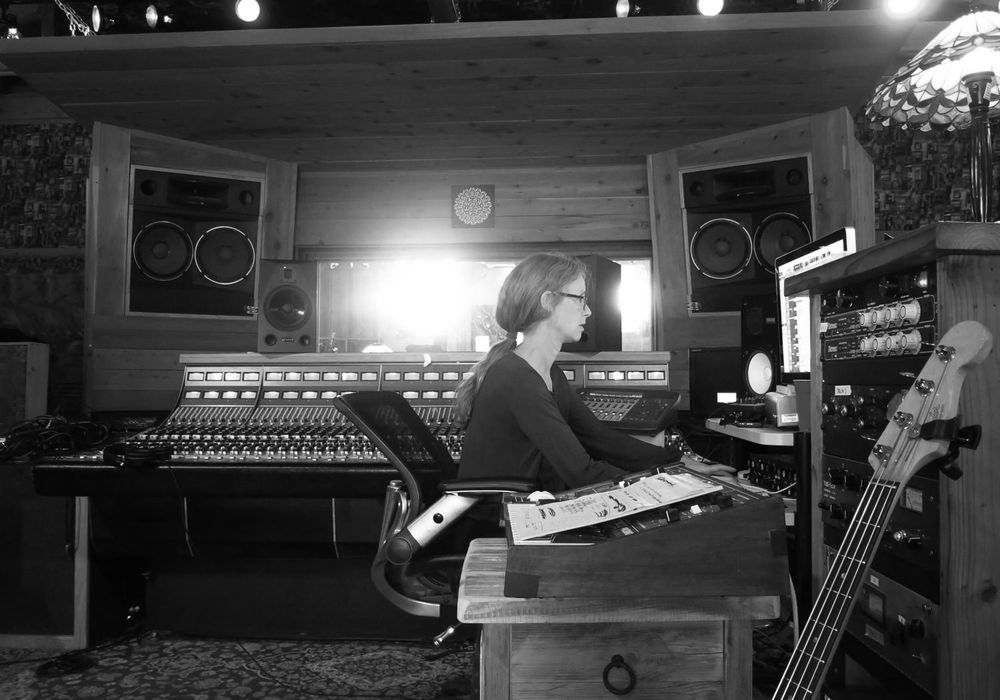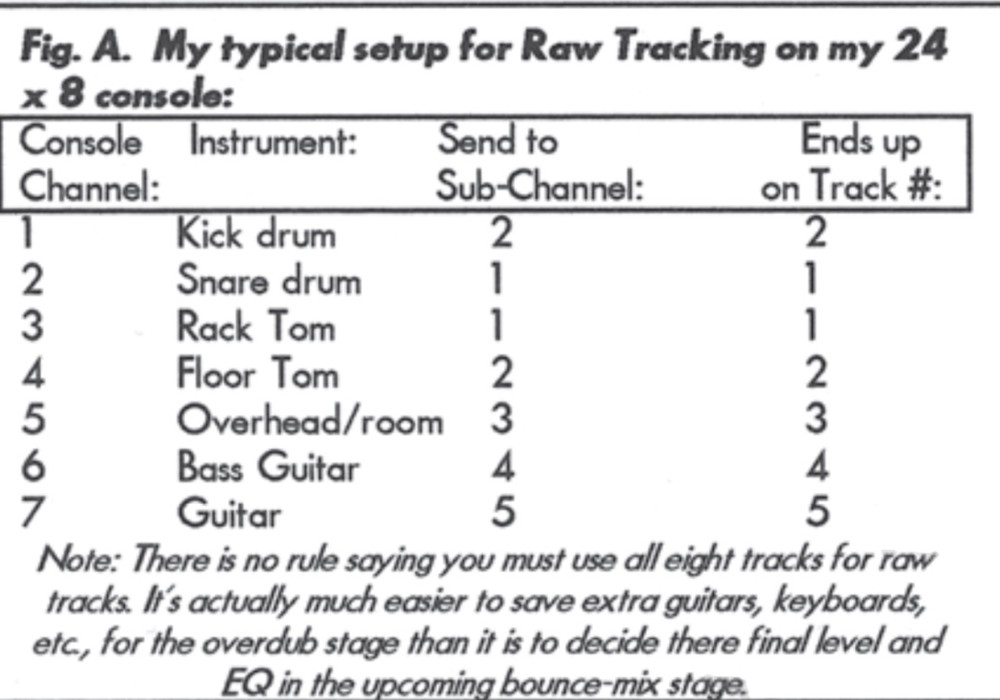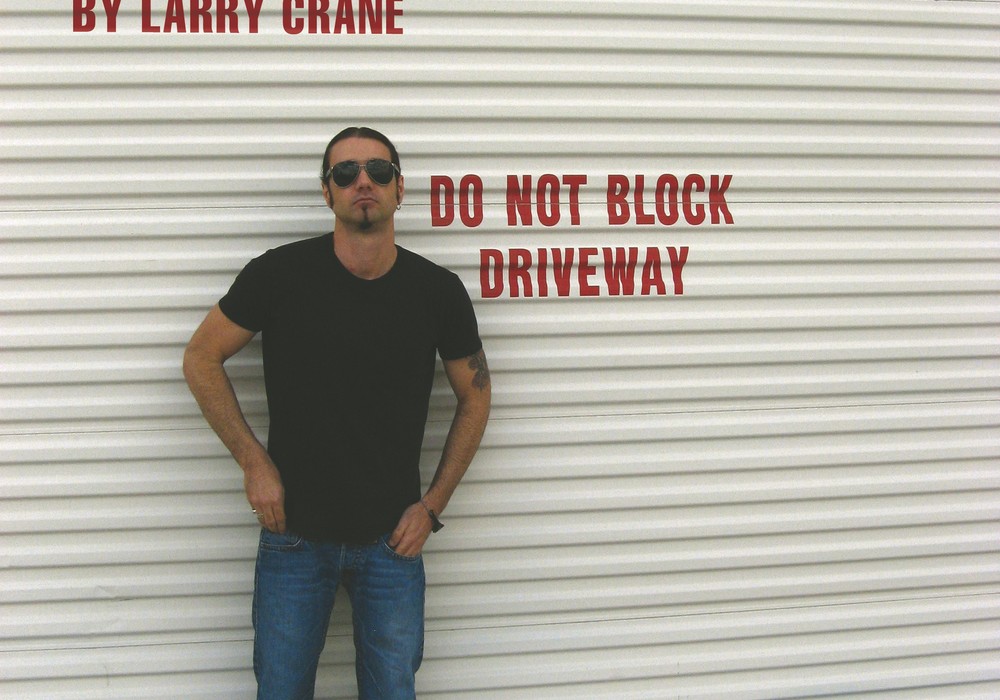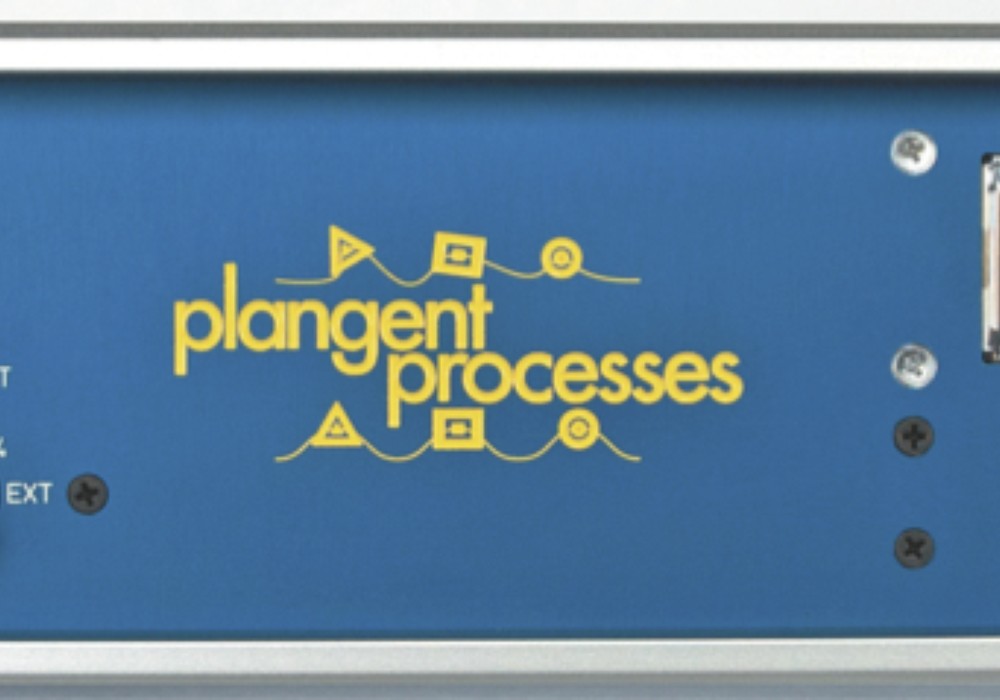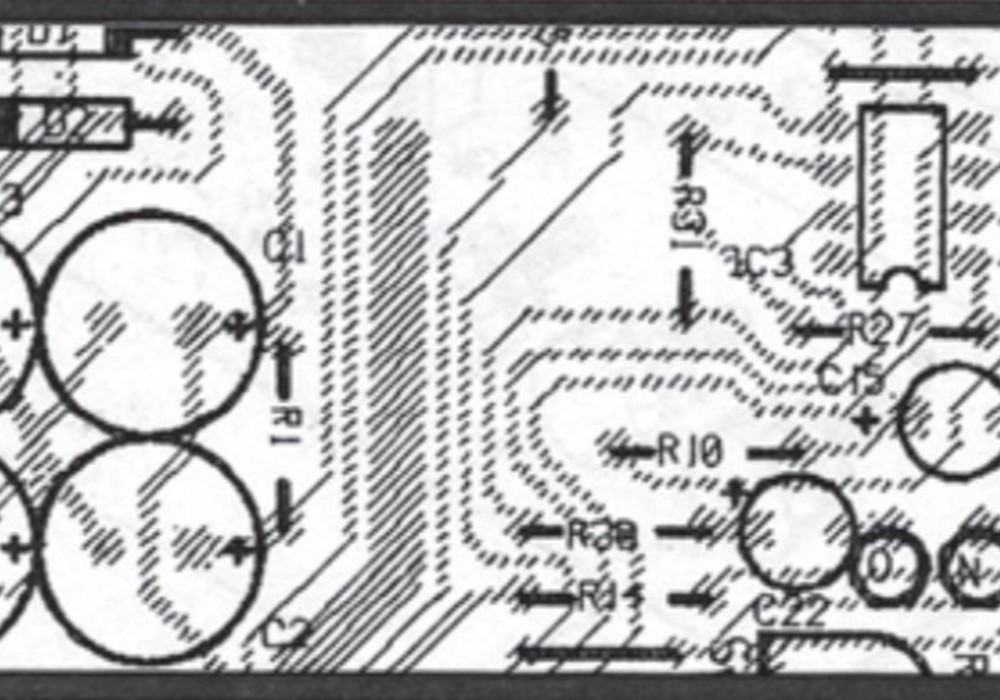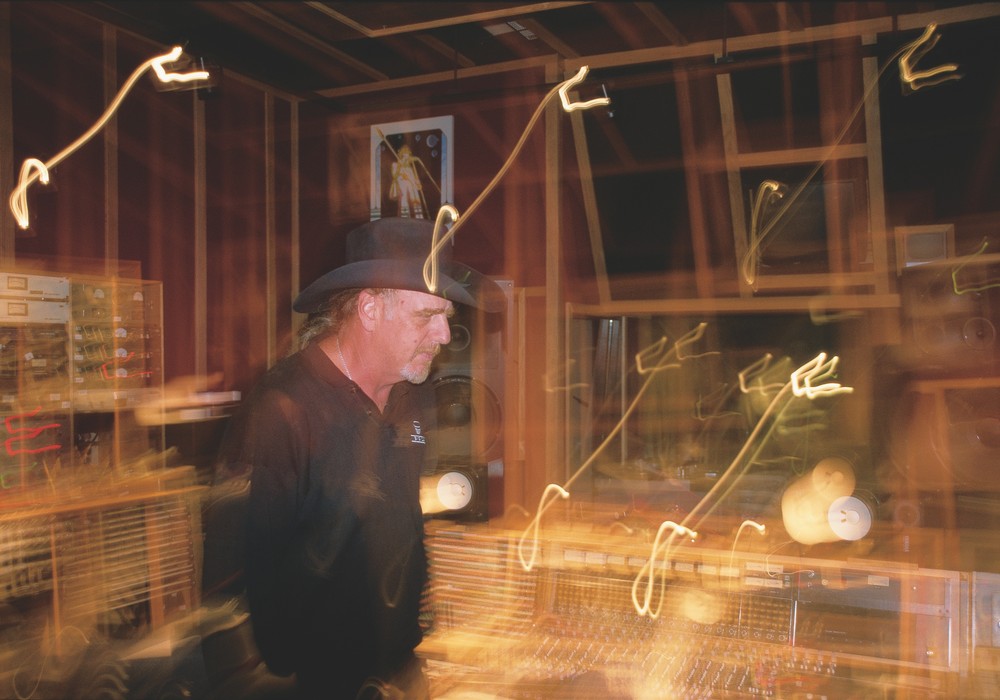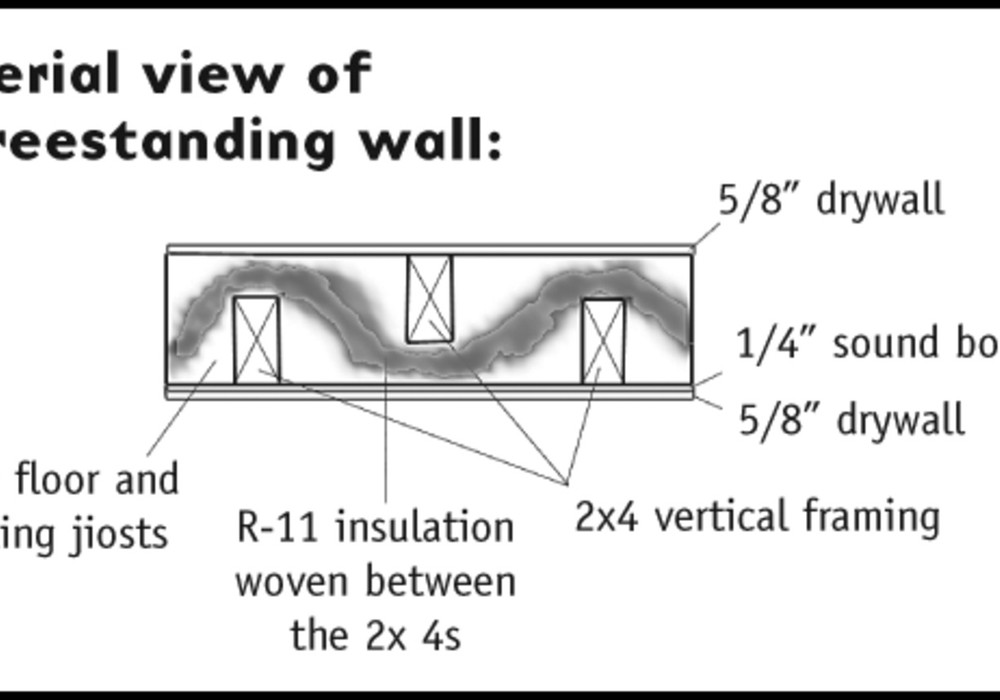Carol Kaye is one of the most recorded bass players of all time, with 10,000 sessions and 40,000 songs under her belt, including a staggering list of hits for Ray Charles, The Righteous Brothers, Johnny Mathis, Nancy Sinatra, Sam Cooke, Glen Campbell, Lou Rawls, Jan & Dean, Henry Mancini, The Lettermen, Paul Revere and the Raiders, The Monkees, The Buckinghams, Sonny & Cher, Andy Williams, Quincy Jones, Joe Cocker, Ike and Tina Turner, Mel Torme, Bobby Darin, Frank Zappa, Wayne Newton, Herb Alpert and even some Motown tracks cut in L.A. Carol is also the bass force behind the Beach Boys' Pet Sounds and Smile records, plus much work with Phil Spector and his "wall of sound". Her list of accomplishments is as endless as it is impressive.
How many sessions a day did you used to work?
Two, three, four a day. That's three-hour dates, and a lot of times you'd go over a half hour, too. But we were pretty organized — we just got used to working hard and go to the next date. It's the first time in history, I think, where musicians in the studio could make a lot of money. We just stayed in the background, which was just fine with us. You had guys in there with butch haircuts that were not hip, like hippie fashion of the '60s. They were older guys and they were wonderful guys. They were top of the line, as far as playing their music and being in the studio working. They were either from the jazz world, or they were from the big band world. There were a lot of experienced guys in there, and if it was rumored that you used drugs or you used booze, then you simply weren't hired. You never saw drugs or booze in the studios in the '60s. Just a little bit in the '70s, but never in the film world at all.
How did you get into studio work?
I accidentally got into studio work close to Christmas time, 1957. Bumps Blackwell came in a jazz club that we were playing with Teddy Evers, Billy Higgins on drums and Curtis Counce on bass. At that time, I was playing a lot of jazz gigs. Bumps comes in and asks, "Do you want to do a record?" I didn't know him, but the rest of the band did, so I thought, "Okay, I'll take a chance." I really didn't want to go into studio work. I was about 22. So, Bumps asks me to do a record and he says it's for Sam Cooke. The date went really well, and the players were really nice. It paid real well. I thought, "Okay, maybe I should do this." And Bumps had some more work for me — I played on the Ritchie Valens stuff and then the Phil Spector stuff. Anne Margaret and Pat Boone. Five years into the studio work I wasn't that hot on guitar but I could play all the utility rock and roll kinda stuff. As soon as the bass player didn't show up at Capitol Records one time [1963], they put the Fender bass in my lap because I had been playing the Dano bass guitar, which is similar to it but it's not a real bass. I had fun at it, and I could feel how much more fun it was to play bass than it was to play guitar. If I play bass I only have to carry in one instrument. The guitarist, with the 12-string, 6-string, Dano, ukelele and banjo and all that stuff that you had to carry in. I always played with a hard pick, got a good sound, good feel and everything. I was fortunate to get a lot of work. I saw the creativeness that could be done on bass. Nobody up to that time was playing what I was hearing on the bass, like little Latin type of rock and roll figures. They used me a lot, especially that pick sound. They wanted a real clicky sound at first, but I said, "No, no, it's got to have a real bass sound." But some people still wanted that treble sound, so on certain dates, like with the Beach Boys, I got a lot more high end, because that's what Brian Wilson wanted. With Mission Impossible, I had the low end and the high end, and I really punched it hard. But there were other dates, like Andy Williams or The Lettermen — I kept the low end in. Most of my dates were just one bass, but there were sometimes, like on Pet Sounds, when they used the string bass along with me.
That brings up something that's very interesting to a lot of people, which is your pick style and your muting style.
The sound of the bass comes from the pickup, the strings, the rosewood neck, a little bit from the nut and from the bridges. When you have strings ringing it cuts into the sound. You can't get a distinct sound. I felt right away, "I've got to put a mute on the strings." We were all mute-conscious back then, because when you go into the studio, you can't possibly have all the same sounds that you do playing live. So I learned really quickly, since I played with a pick, I took a piece of felt, doubled it up, taped it on the strings. For finger players, they would put a piece of foam underneath the string, and just barely touch the string to avoid a lot of the overtones and the undertones which cut into the bass sound. Now for some reason, in the last 25 years or so, they lost this art and they started to sell a lot of gear for thousands of dollars to try to get a good sound recording-wise. That stuff doesn't work, a 25 cent mute works. So it works that way with a hard pick. The thin pick gets a real clicky sound and not a very good bass note.
Yeah, I think that's something often people hear, the click sound.
A lot of Pet Sounds has string bass to varying degrees, but there were some times that Lyle Ritz (on the string bass) said, "I think I'm playing pantomime" because he wasn't on the record very much. But there is one cut, I think "God Only Knows", where there is a lot of string bass on there, along with the electric bass. Brian wanted a real clicky sound. If you want a real click sound, listen to the Nancy Sinatra Sugar Town record. That's real click, and that's a Fender bass. But the beauty about the way of playing with a pick that I did was that it gets both a good bottomy as well as a real good click.
Something that I've learned from your lessons is by playing hard and by slightly controlling the muting it's almost eliminated the need for compression in my recording.
Most of the time they never put any EQ or compression on me. When you compress the bass sound it's a bad sound. The only time they used compression on me was a little bit of the Motown sound with Armin Steiner, the engineer. He'd always mic my amp and say, "I love your bass sound!" And I'd go in there, and I'd say, "What happened to the bass sound? It's changed." And he said, "Well, I love your sound but I had to put some compression on it to match the sound they got back in Detroit." Well, that made sense to me because they were trying to match a certain sound. They wanted the L.A. stuff to sound more like the Detroit stuff. That I bought, but they never put EQ on me at all. They didn't have to. They either mic it, or toward the end of the '60s they could take it half off the amplifier and half off the DI too.
You were using what people now would consider a guitar amp.
No, it was four ten inch speakers, and it stood about this high. It's what they called the Fender Super Reverb amp, but it was for bass. It had an open back — it just simply got the right sound with the cheapest speakers in the world. After that, I used the smaller Versatone amplifier — a very clean amp — it was very low powered. But it's very super clean, and I used that. But for most, if not all, of the Beach Boys, I think I used that Fender amp and they mic'd it.
Do you have any recollection of actually how they mic'd your amplifier. Was it the large condenser mics?
Mostly Shure, but sometimes AKG and RCA was the ElectroVoice mic, I'm pretty sure. I liked the Shure mic, I think that's the better thing. I have one of those little Shure mics too. And I also have a new Neumann mic that sounds really good too.
Would you have the amp next to you or would it be in isolation?
It would be right next to me, either side, and they'd mic it right there. Most of the film calls that I did — Mission Impossible, MASH, Hawaii 5-0 — that was always mic'd. The film scores like the Thomas Crown Affair, Airport, In The Heat of the Night, the Quincy Jones films, In Cold Blood, all that stuff — it's all mic'd. There are a few things that I did out at Universal that were half and half. But most of what you hear of me on the TV and on the films was on that.
That's incredible.
It wasn't always a great sound, because I'd be too loud or something, but most of the time it was great. Ray Charles loved to have it mic'd on me, like in "I Don't Need No Doctor" and that tune "America the Beautiful". That's all mic'd.
When you would go into a session and you were adjusting your sound, your tone, your bass, your amp — were there particular things that you could pinpoint that you listened to in general within the ensemble that you tried to blend your sound with?
Once you do this a few times you get an idea of what kind of sound that they're looking for. You have a certain sound that you know will work, and then if they want you to add more high or low end. It's usually more high end, because the way that they recorded back then was analog. I pick down on the downbeat and up on the upbeat. So it would come out very clean. The way most people play with a pick was like a guitar player, or they'll stand up and pick it way down here, and that's totally wrong. You have to pick from the wrist, set it on the string, and then pick right from the wrist. You don't move your arm hardly at all. Every note comes out clean.
One of the most impressive things about your playing is the absolute commitment to the beat. There's commitment and intention in everything I hear.
Every note has to come out clean. You have to have great time. That's why I tell all my students, practice with the metronome.
You've made some absolutely incredible funk records. I know a lot of DJs and hip-hop people that absolutely worship you. The Hampton Hawes is...
You know how long ago we did that? I think we did that in 1974. We cut that album in 1974. Hampton Hawes, now that was the greatest piano player out there. Miles Davis loved him — Dizzy and Bird, they had to have Hampton.
What is the basis of your funk playing?
Latin. If you listen to a Latin band and you listen to the conga, that's funk. I think it's a combination of the African and Latin combination is just terrific. You can get a lot of great ideas from that.
On one of your educational exercises the title of the song is R-E-G-G-A-Y. Can you explain that?
I'm caught with the wrong spelling on that! In 1968, my first child, Peggy Kaye, graduated from high school. As a gift, she and I went to Jamaica. Peggy and I had a great time, we went out dancing and I sat in with the band and played, which was kind of strange back then because it was a black band. But of course I didn't feel anything but it was a little weird for people. They had this reggae music. I didn't know how to spell the word, but I loved the feeling of it and I brought it back to Los Angeles. I had no idea that it was also starting to erupt in New York. We got on this date with Charles Cunnard, a very fine jazz organ player. So it had Joe Pass on the date and it had Paul Humphrey on drums. I start playing this little reggae beat, and Charles loved it and everybody in the studio loved it. They named it my tune — it was kind of a riff or something. It was kind of a semi-hit for Charles, so I decided to put it in my first book, because I thought it was an important type of feel in music.
You've witnessed much of the evolution of studio technology. You started probably with mono recordings..
Well, I think it was two tracks, then it was three tracks, then four tracks. It was like, "Eight tracks! My god, what's the world coming to?" And then when it went to 16, it was off the charts.
With digital technology there are actually times when it's debatable whether the choices it allows you are taking the focus away from the actual creativity of the song and the playing.
I've got a lot of buck about that, because they've hired me recently, the last three or four years, because they want that old analog sound. I did a very nice album with Matthew Sweet. He tried to come really close to the Phil Spector sound and he did. You've got to add some bottom to it when you go digitally. But I do have a bone to pick. They're adding so much junk to the music that you can't hear the actual sound of the instruments. When we recorded in the '60s, all the engineers came out and listened to the way we sounded in the room and they wanted to get as close to that sound as possible. There's a presence on the records cut in the '60s that you don't have today. A lot of that is because they cut the band at the same time. Yes, they put the strings on later, but at least they'd cut the horns with the rhythm section, and that's a very critical thing.
People are very interested in the construction of the "wall of sound".
Get as many bodies in the studio as possible and have them all playing the same part and leaking into each other's mics like crazy. That's what it was. But I do think it's more than that. Phil, back there in the booth — we all watched him as he grew and grew and grew with the sound and he tried this and tried bouncing this track over here and this one over there. And we're just standing there, "Wow, you can do that?" Phil Spector invented the use of the earphones in the studio. He dumped too much of that echo in there. The echo that he used was built by Dave Gold and Stan Roth at Gold Star Recorders. They ran that echo through the women's restroom, so if I had to go to the can while they were making a playback they'd say, "Don't flush the toilet, Carol." Dave can tell you about the specs of that echo, but Phil used it to its maximum. He knew how to work it but I think a lot of the "wall of sound" was that we all played pretty loud into the room, and we leaked into each other mics. You just couldn't isolate it. But I did see Phil start to use a lot of baffles too. We all sat in little cubicles with huge thick baffling in there, so he did attempt to isolate us as good as he could. He worked on the drum sound for about an hour. He was the first one to use a lot of mics on there. He had Hal Blaine put a lot of tape on the cymbals. Hal and Sharky Hall and Earl Palmer at first used to use their wallets to dampen the snare drum, but then they used pieces of handkerchief and they would tape them on there as mutes. They'd mute the cymbals, they'd mute the tom-toms. They used to stick a blanket into the bass drum, and then they went to the smaller bass drum. With the smaller bass drum they'd put the muting systems on there.
Did the bass drum have a front head on it or was it open?
Yes, it was always open. Some of them had a big hole in them. It was kind of a front head but then it had a large hole. Phil Spector took his time to get the different mics. I think he was the first one to use a lot of mics on the drum set. We'd sit there for about an hour while he had Hal Blaine play — Hal Blaine played hard. He didn't just play lightly and then on the take play hard. He played hard all the time. Earl did too. Phil had a habit of working us. It didn't really matter because it was kind of exciting to do take after take and you could feel the take getting better and better, and you had to play with a lot of power with each take. But after about two hours you have to go to the bathroom, lets face it. So he'd say, "Okay, don't move the mics." So that's what we did. We were careful with those mics and careful to get back to the same way. I think with "River Deep, Mountain High", there were so many people on those takes and with the people in the booth it was really like a party almost. But I thought that we were really going to have a huge hit with that one too. Tina Turner was there and she was singing. I'm sure they put a voice on afterward too but she was in the booth. It was an exciting date and for Phil not to have a number one hit with that it was like, "Whoa". It really hurt us all.
In 1969 you took a break, correct? To start a publishing company?
I was so tired of all the surf rock and it seemed like we were doing the cookie cutter type of recording with every group. It was starting to sound the same to me. It didn't matter if it was or Jan and Dean or whoever. I'm playing on the albums by The Monkees and I said, "That's it, I can't stand this kind of music any more." I stopped at the very top in '69. I started writing and began teaching. When I went back to recording, after a few months, I was careful not to do any more of the rock and roll sort of things. I was just tired of that. I did mostly the people that I wanted to record for — Ray Charles, Henry Mancini and Harry Nilsson. I loved Harry — I thought he was a good singer. I had been doing film scores and TV shows and I did more of that. Then after a few years of that, I got tired of that, and I went on to play live with Hampton Hawes — this was jazz. And this time I played jazz on bass, so it was kind of fun.
Northern Windows is something that people should really check out if they want to hear Carol Kaye doing her thing.
Well, Hampton Hawes, whoa. Hampton would be on the stage and he'd be playing piano with one hand and electric piano with the other. And people were just going off.
When people mention Carol Kaye, it's a surprise when they realize that you're a woman. Quincy Jones said, "Carol can do anything and she left the men in the dust."
That's nice of him. But a lot of women could play. In the jazz world, since 1900 there's a woman in every band almost. Not in the big bands, but in the combos. I used to go to musician's houses, and see pictures of the bands they played in — half of them had at least one woman in the band. So it's not like it's something recent, and I didn't start it. I was the first one, I think, to work day and night in a studio back then. I think it was lucky that I was a guitar player at a time when rock and roll came up because they needed people on guitar. Pure luck. I was one of the guys and I was proud of that. I never thought of myself, "I am a woman playing the guitar." I was a guitar player and bassist. If I couldn't cut it, I'd practice so I could. It was great to play with the men. Most women who really play good will say that too. The men back then respected the women. I think it's important to be a professional, whatever you are. If you're a man or a woman, just be a pro.
I've read that you have a real attachment to the recordings you did for Brian Wilson's unfinished Smile record.
Yes, his best work. A lot of people talk about the fact that it was recorded in pieces, but it's okay to do a record in pieces. We were doing film scores in pieces. It's the same thing. As far as doing it in pieces, I think that his music was so potent and so powerful, at that time it felt right that he had to do it in pieces.
So it was edited together?
Yes, I think that we did certain parts and then we'd do other parts. It wasn't a straight song all the way through.
Like "Heroes and Villains" sounds to me to be an edited piece.
Exactly. It almost came out like suites, like classical suites. A lot of people thought Pet Sounds was his best, but I think he just grew more. When I first worked for Brian, he was doing that real surf rock — simple stuff. Every day he just grew more and more. He was a strong dude but he had a subtle sense of humor. He'd say, "Doo wop-a doo" and he'd break himself up and we'd start laughing too. He was a good guy to work for. He knew what he wanted. It was long because he'd only did one song per date. Usually on dates, you're doing four or five tunes. With Brian, and with Phil too, always one tune. At the tail end Phil would have us jam, and that would be Side B at the last part of the date. But Brian, he worked on one tune for that whole time. He stuck mostly in the booth. He would bring the parts in and the notes would be on the wrong side of the stem or something. You knew that he wrote that, because he would come up and sing with the music too. When he first came in, he'd sit down at the piano and say, "This is how the tune goes" so we'd get an idea for the feel of it. Then he'd go back in the booth and talk to us from there. Chuck Britz would set up the board for him and would help him on the board at first. It was Chuck that engineered at first and then Brian got to know how to engineer from Chuck. Then toward the end Chuck was just doing the machines, setting up the board and giving him advice on stuff. That's why Chuck always said, "The Beach Boys was Brian." I have to agree with that because the dates that we worked were all for Brian. The guys would come in, Mike Love and all those guys, and they'd listen to the track for a few minutes and they'd run out the door. That was it.
Brian and Paul McCartney seem to be some of the first rock and roll artists that realized technology was inherent to translating music.
With the "Good Vibrations", there were twelve dates. I have twelve dates on my log. I'm not on the first one, that's Ray Pohlman and they did that at Gold Star. But for some reason, that didn't make it. That was scrapped and so Brian used me on bass after that for twelve dates on "Good Vibrations". The bass line was exactly the same for twelve dates but he changed the other parts. There was one date when I had brought my little box with the fuzz tone and the octave divider in it. So I said, "Hey Brian, you want to try it with some of this?" So we tried it with the fuzz. It had a good sound to it. So that was one time when we did change the bass sound, but the line was the same. He worked hard on that. We all worked with him because we knew the thing was going to be a huge hit. I mean, you knew it.
As an instrumentalist, it seems good to not idolize people too much, and to focus upon your own creativity and your own inner voice.
Well, you're there to do the job. Fawning over someone doesn't get on the tape, your playing gets on the tape. You've got to play good. You try to be agreeable. You don't want to pick fights but you don't want to be a phony in this business. You can't help but admire Ray Charles, Bobby Darin, Frank and Nancy Sinatra. These are pretty good people. I'd see them in the studio and I say, "Yes, we're there to make music together and to work together and it's enjoyable to be around them." Even some of the kooky ones, you enjoy them too, because they are there for a serious thing of making music together. Playing music, day and night, where else can you do that and make a good living for your kids too?
